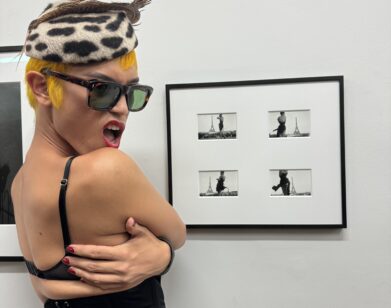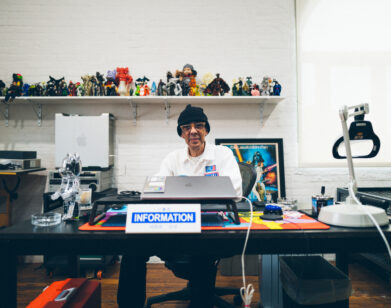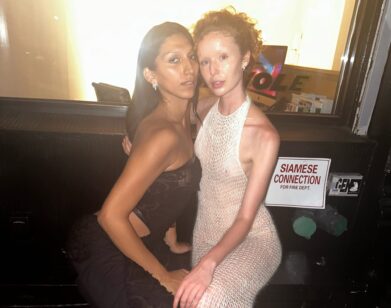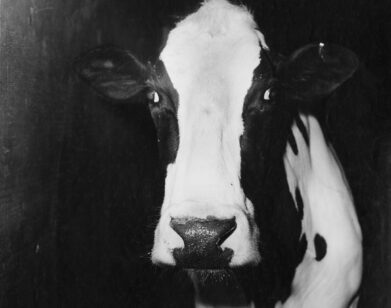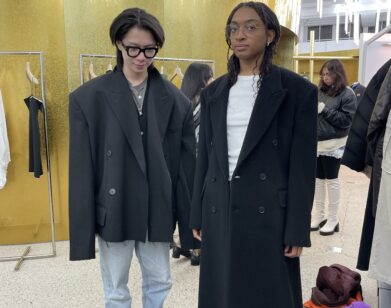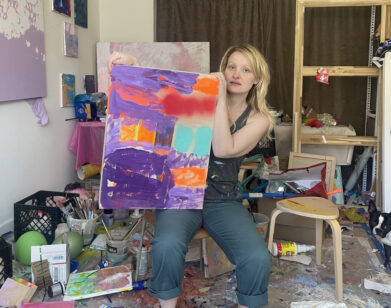art!
Kapp Kapp Takes Tribeca
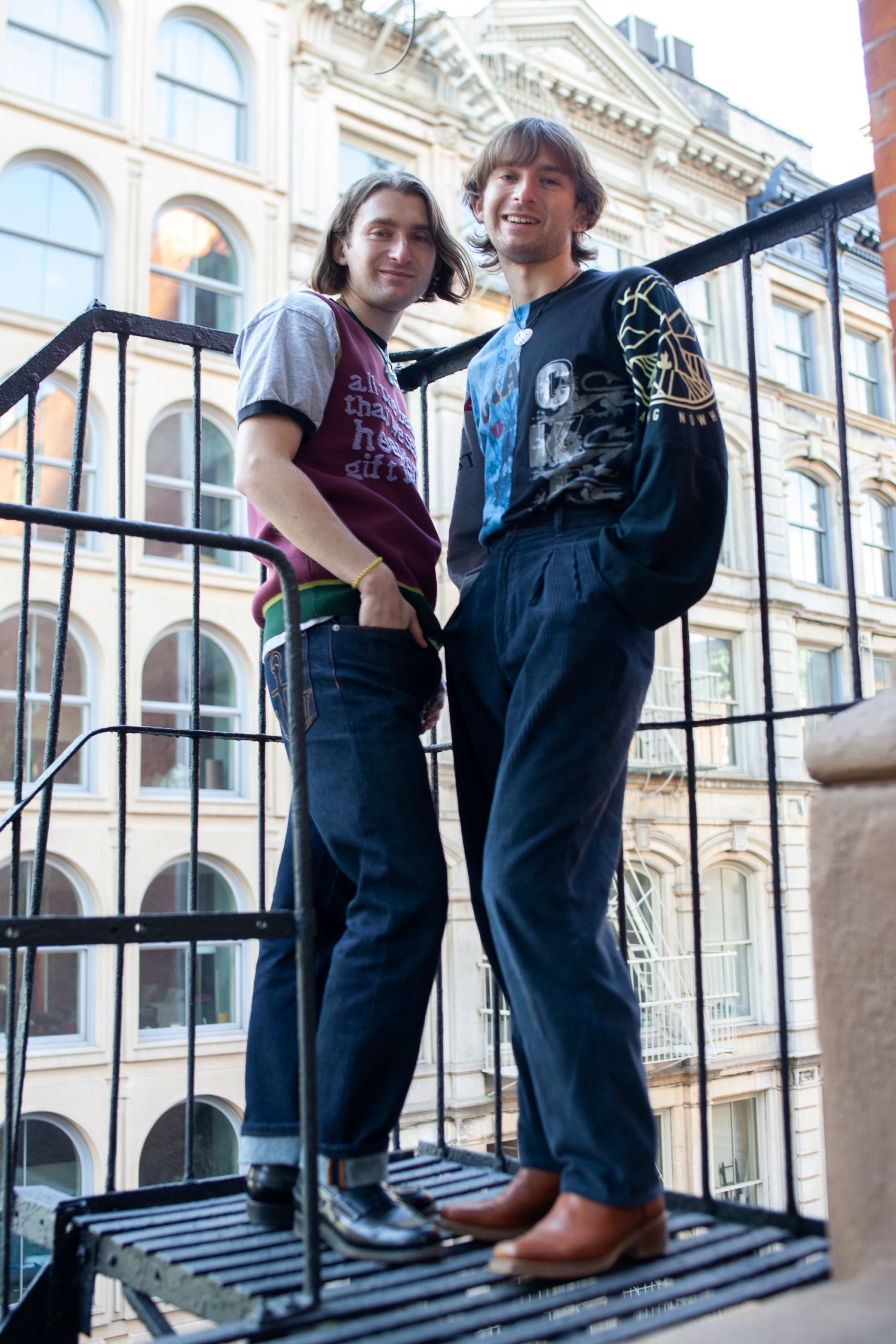
Photo by Gabriel Ponto.
Clever upstart galleries helmed by ambitious young curators pop up and expand every year—it’s a vital part of a city’s street ecosystem. Many such galleries promise to showcase “underrepresented voices,” but one space, run by two gay twin brothers, has continually delivered on that intriguing promise. In its short life in New York, Kapp Kapp has become a career-maker—and a career-reviver—for a fleet of talents who might not otherwise have received their due. Founded by brothers Sam and Daniel, Kapp Kapp first opened in Philadelphia in 2019, and touched down in Tribeca at the beginning of 2020, not too long before lockdown. Now, bursting with post-COVID energy, the twins are expanding their project with a second, larger Tribeca location in the gallery-studded cast-iron building at 86 Walker Street. The brothers will ring in the opening of the new space with an exhibition of unseen works by the New York photographer Stanley Stellar, a hero of the gay community for his tough-yet-tender images of queer life around the Christopher Street Piers in the 1970s and ’80s. Stellar may be a roving eye on the streets of the city, but he won’t have to walk far from his North Moore Street loft to attend the show—which opens Saturday, January 15th. To mark the opening of their new gallery, the brothers talked to their friend, the painter Sam McKinniss, about life in the neighborhood.—CHRISTOPHER BOLLEN
———
SAM McKINNISS: Where are you guys right now?
DANIEL KAPP: I’m in Fort Greene in my apartment.
SAM KAPP: I’m in Philly at the gallery.
McKINNISS: I understand you’re getting rid of the gallery in Philadelphia.
SAM: Yeah, it’s a big moment for us. It’s exciting and a little bittersweet too. We’re from New York, but we spent a lot of time in Philadelphia when we were growing up. Our mom’s family goes back four or five generations here, which for Jews in America is a pretty long time. This space in Philadelphia was our first gallery, but it came time, given our growth, to focus our energies on one space and New York. I’ll still be living in Philly, splitting my time between here and Tribeca. Our plan is to create long-term programming here, murals or other projects, while we’re growing our program in New York.
McKINNISS. Tribeca is a lot of fun now, walking around and looking at the art shows. I like it better than the other art neighborhoods in New York right now.
SAM: Daniel and I have been referring to the neighborhood in the last couple months as “BeCa”—Below Canal—because if you ask a long-time New Yorker about where most of the area’s galleries are, they’ll say it’s not true Tribeca. The artist Stanley Stellar, whom we represent, has lived in the same Tribeca loft since the ‘70s, and he told us we’re not in real Tribeca.
McKINNISS: You have really good neighbors in your new space on Walker Street, right?
DANIEL: Yeah, The Hole is on the ground floor and Lomex is on the third floor. We will be on the fourth floor.
SAM: The building has a cool history. It was Peter Doig’s old studio building, so it has a rich art connection.
McKINNISS: You’re opening the new space with a show of Stanley Stellar’s photographs, correct?
SAM: The show focuses on Stanley’s photographs at The Piers from the mid ‘70s until the early ‘80s. I first encountered his work because he had this incredible Tumblr page for like 10 years. It changed when Tumblr introduced an anti-nudity policy a few years ago. He had an archive on there with thousands of photos, and I would scroll through it for hours. Most of Stanley’s photos are of pre-AIDS New York, and it’s a weird coinciding of timelines that the Piers started to be demolished not long after the first cases of AIDS began to appear among the queer community. As AIDS started to eradicate the community, this special gathering place was being destroyed. Stanley was out there for years taking hundreds and hundreds of photos, and only a small portion were made into prints at the time. Most of Stanley’s photos in the show have never been exhibited before.
McKINNISS: I didn’t know about Stellar’s work until you guys started working with him, but I love looking at work like that because it’s an important reminder that gay liberation succeeded—and it was fun! Like, everyone was hot and they were having fun, it was a liberated atmosphere. A lot of images show us just how difficult the AIDS epidemic was when it first hit, but it’s important to remember that these people were also experiencing a lot of joy together.
SAM: I think that’s the beauty of this show. The Piers were a Secret Garden. They had been old shipping piers that were abandoned. Stanley told us that there was a fence around the perimeter, and in ‘75 he first noticed people crawling through a hole in it. He followed them, and beyond the fence was this fantasyland. There’s something really special about seeing that world in color, too. These abandoned offices are painted in this beautiful turquoise color. Over the years, you see that paint peeling while the spaces crumble around these people, but there were really beautiful moments of connection there, and we feel it’s special to show these photos just blocks away from where they were taken. When we opened our first gallery space, Stanley was so excited that it was in his neighborhood. He’s been here for fifty years. He’s really seen this neighborhood change around him.
McKINNISS: This body of work reminds me of Alvin Baltrop’s show at the Bronx Museum. They presented volumes of Baltrop’s photographs from The Piers, downtown, all the the gay sex cruising scenes. It’s important to always see more of that. Do you interact with Stanley often?
SAM: Stanley and I talk on the phone every week, and my partner Harry says I’m never calmer than when I’m on the phone with Stanley. We both take those calls from bed. It’s a really beautiful friendship that’s blossomed over the past couple of years, since we first showed his work in Philadelphia in 2019, and then again in New York in 2020. The latter was a beautiful collection of photographs of New York nightlife. It felt important to be showing those images mid-lockdown. Even getting these photographs framed and transported to the gallery was difficult then. But it felt important to celebrate gathering, as it was something missing from all of our lives. Sadly, that show did not have the foot traffic it should’ve had, sinec people were not leaving their homes. This show feels like the moment we have always wanted to create with Stanley.
McKINNISS: And you’re adding some new artists to your roster.
SAM: We are officially representing Gilbert Lewis, who is an incredible mainstay of the Philadelphia art scene—a tried and true Philadelphian. He has received recognition within Philadelphia, but beyond that he’s been left out of the conversation for several reasons. First, geographically, Philadelphia itself has often been left out of the art world’s dialogue, and second, he was a gay man making work in the ‘70s and ‘80s. For many reasons, the art world was not ready to accept him. It’s been an exciting partnership. We both pride ourselves for having a diverse program. Gilbert and Stanley were making work at the same time, but the work is so different. Gilbert’s primary medium was gouache, he made beautiful portraits of young men, and also portraits of his patients—older people in nursing homes—from his work as an art therapist.
DANIEL: We’re also representing Velvet Other World, a much younger artist duo based in Providence, Rhode Island. We just closed a show with them in our New York space.
McKINNISS: That’s an amazing mix of young and old.
SAM: It’s a sad situation. Gilbert has Alzheimer’s and is not able to make work anymore, so we kind of function as his voice. We take that really seriously. The show was a really intimate exhibition of works on paper, some incredibly beautiful portraits.
McKINNISS: The new gallery is bigger than your previous spaces right?
DANIEL: It is four times the size of our current New York space.
McKINNISS: I’ve always liked the intimate, friendly atmosphere at Kapp Kapp, and the way you’ve put together really good shows in very tight spaces. I enjoyed hanging one of my paintings next to Luke O’Halloran’s painting in your group show Tulips in 2019. It felt so warm, and intimate, and it gives you a closer experience with an exhibition.
DANIEL: That’s still how we approach our programming. Sam and I are scaling up, so it will be a new challenge for us, but intimate is the exact word we’re after every time we put a show together. Prior to opening Kapp Kapp, we were both in love with so many small exhibition spaces in New York and Philadelphia. We understood what could be done with a small space and were never intimidated by it. Figuring out how to do the most with what we have has always been central to our thinking.

